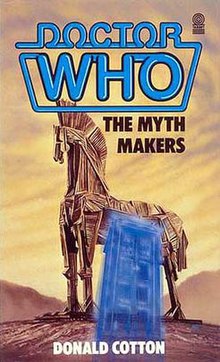
"Mission to the Unknown" is the second serial of the third season of the British science fiction television series Doctor Who. Written by Terry Nation and directed by Derek Martinus, the single episode was broadcast on BBC1 on 9 October 1965. The only standalone regular episode of the show's original run, it serves as an introduction to the 12-part story The Daleks' Master Plan. It is notable for the complete absence of the regular cast and the TARDIS; it is the only serial in the show's history not to feature the Doctor at all. The story focuses on Space Security Agent Marc Cory and his attempts to warn Earth of the Daleks' plan to take over the Solar System.

Steven Taylor is a fictional character played by Peter Purves in the long-running British science fiction television series Doctor Who. A space pilot from Earth in the future, he was a companion of the First Doctor and a regular in the programme from 1965 to 1966. Steven appeared in 10 stories.
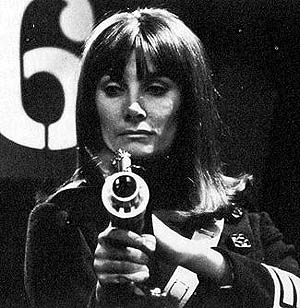
Sara Kingdom is a fictional character played by Jean Marsh in the long-running British science fiction television series Doctor Who. A security officer for Mavic Chen from the 40th century, she later joined the First Doctor and Steven to work against Chen's interests. She is sometimes classed as a companion of the First Doctor but the BBC's official Doctor Who website does not include her in their list of companions. Her status as a companion is commented upon in its Episode Guide.

The Daleks' Master Plan is the mostly missing fourth serial of the third season in the British science fiction television series Doctor Who, which originally aired in twelve weekly parts from 13 November 1965 to 29 January 1966. This twelve-part serial is the longest with a single director and production code (The Trial of a Time Lord was longer but was made in three production blocks, with separate codes, and with four separate story lines each with their own authors and working titles).

The Web Planet is the fifth serial of the second season in the British science fiction television series Doctor Who. Written by Bill Strutton and directed by Richard Martin, the serial was broadcast on BBC1 in six weekly parts from 13 February to 20 March 1965. In the serial, the First Doctor and his travelling companions Ian Chesterton, Barbara Wright, and Vicki ally themselves with the Menoptra, the former inhabitants of the planet Vortis, as they struggle to win back the planet from the malignant Animus and its Zarbi slaves.

Planet of Giants is the first serial of the second season in the British science fiction television series Doctor Who. Written by Louis Marks and directed by Mervyn Pinfield and Douglas Camfield, the serial was first broadcast on BBC1 in three weekly parts from 31 October to 14 November 1964. In the serial, the First Doctor, his granddaughter Susan Foreman, and her teachers Ian Chesterton and Barbara Wright are shrunk to the size of an inch after the Doctor's time machine the TARDIS arrives in contemporary England.
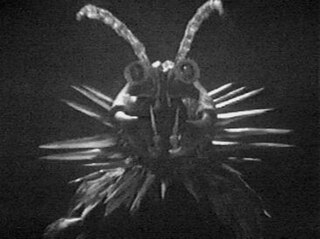
The Rescue is the third serial of the second season of the British science fiction television series Doctor Who. Written by outgoing story editor David Whitaker and directed by Christopher Barry, the serial was broadcast on BBC1 in two weekly parts on 2 January and 9 January 1965. In the serial, the time travellers the First Doctor, Ian Chesterton, and Barbara Wright befriend Vicki, an orphan girl marooned on the planet Dido who is being threatened by an apparent native of Dido called Koquillion while awaiting rescue.

The Romans is the fourth serial of the second season in the British science fiction television series Doctor Who. Written by Dennis Spooner and directed by Christopher Barry, the serial was broadcast on BBC1 in four weekly parts from 16 January to 6 February 1965. In the serial, the First Doctor and his new companion Vicki investigate intrigue surrounding the death of a lyre player en route to perform at the palace of Nero in Rome, while companions Ian Chesterton and Barbara Wright are captured by slave traders and sold respectively as a galley slave and as a body slave to Nero's wife Poppaea.

The Space Museum is the seventh serial of the second season in the British science fiction television series Doctor Who. Written by Glyn Jones and directed by Mervyn Pinfield, it was broadcast on BBC1 in four weekly parts from 24 April to 15 May 1965. In the serial, the First Doctor and his travelling companions Ian Chesterton, Barbara Wright, and Vicki arrive in a Space Museum on the planet Xeros, where they seek to change their fate after seeing themselves turned into museum exhibits in the future. They also become entangled in a conflict between the militaristic Moroks who run the museum, and the servile indigenous Xerons who work for them.

The Chase is the eighth serial of the second season in the British science fiction television series Doctor Who. Written by Terry Nation and directed by Richard Martin, the serial was broadcast on BBC in six weekly parts from 22 May to 26 June 1965. Set in multiple time periods on several different planets, including Aridius, Earth, and Mechanus, the serial features the Dalek race travelling through time while pursuing the TARDIS and its occupants—the First Doctor and his companions Ian Chesterton, Barbara Wright, and Vicki —to kill them and seize the TARDIS for themselves. The Doctor and companions encounter several characters, including monsters Dracula and Frankenstein's monster, human astronaut Steven Taylor, and an android replica of the Doctor.
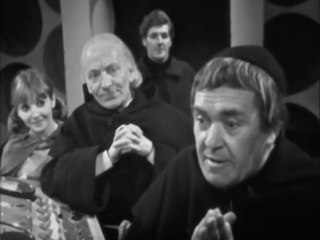
The Time Meddler is the ninth and final serial of the second season of the British science fiction television series Doctor Who. Written by Dennis Spooner and directed by Douglas Camfield, the serial was broadcast on BBC1 in four weekly parts from 3 to 24 July 1965. Set in Northumbria in 1066, before the Battle of Stamford Bridge, the serial features the time traveller the First Doctor and his companions Vicki and Steven Taylor as they attempt to outwit the time traveller the Monk, who is plotting to change the course of European history by wiping out King Harald Hardrada's Viking invasion fleet, leaving Harold Godwinson and the Saxon soldiers fresh to defeat William of Normandy and the Norman soldiers at the Battle of Hastings.

Galaxy 4 is the first serial of the third season of the British science fiction television series Doctor Who. Written by William Emms and directed by Derek Martinus, the serial was broadcast on BBC1 in four weekly parts from 11 September to 2 October 1965. In the serial, the First Doctor and his travelling companions Vicki and Steven arrive on an arid planet, where they encounter the beautiful but dangerous Drahvins and the hideous but friendly Rills, two crash-landed species in conflict with one another. Both species wish to escape as the planet is set to explode in two dawns, but the Drahvin leader Maaga wants only her people to make it out alive.

The Massacre is the completely missing fifth serial of the third season in the British science fiction television series Doctor Who, which was first broadcast in four weekly parts from 5 to 26 February 1966.
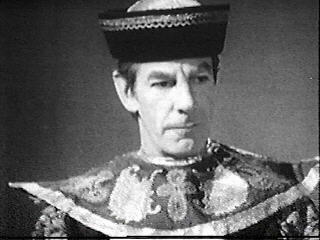
The Celestial Toymaker is the mostly missing seventh serial of the third season in the British science fiction television programme Doctor Who, which was first broadcast in four weekly parts from 2 to 23 April 1966.

Adrienne Hill was an English actress. In 1965, she had brief recurring roles in soap opera 199 Park Lane and as Katarina in science fiction television show Doctor Who, which ended when 199 Park Lane was cancelled after 18 episodes and her character in Doctor Who was killed off after just five episodes.

The First Doctor is the original incarnation of the Doctor, the protagonist of the British science fiction television series Doctor Who. He was portrayed by actor William Hartnell in the first three series from 1963 to 1966 and the tenth anniversary story The Three Doctors from 1972 to 1973. The character would occasionally appear in the series after Hartnell's death, most prominently as portrayed by Richard Hurndall in the 1983 multi-doctor special The Five Doctors, and as portrayed by David Bradley in the 2017 Twelfth Doctor episodes "The Doctor Falls" and "Twice Upon a Time" and in the 2022 Thirteenth Doctor episode "The Power of the Doctor", the latter previously having portrayed Hartnell himself in the 2013 biopic An Adventure in Space and Time.
Donald Henry Cotton was a British writer for radio and television during the black and white era. He also wrote numerous musical revues for the stage. His work often had a comedic bent.

Vicki is a fictional character played by Maureen O'Brien in the long-running British science fiction television series Doctor Who. An orphan from the 25th century, she was a companion of the First Doctor and a regular in the programme in Seasons 2 and 3 in 1965. Her last name was never revealed during the series. Vicki appeared in 9 stories.
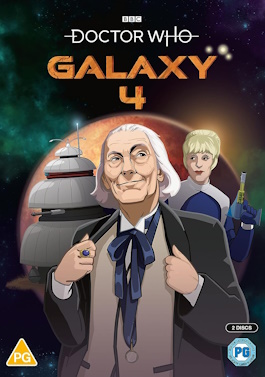
The third season of British science fiction television series Doctor Who began on 11 September 1965 with the story Galaxy 4 and ended on 16 July 1966 with The War Machines. Only 17 out of 45 episodes survive in the BBC archives; 28 remain missing. As a result, only three serials are complete.
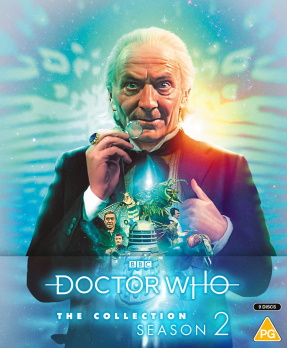
The second season of British science fiction television series Doctor Who was originally broadcast on BBC1 between 1964 and 1965. The season began on 31 October 1964 with Planet of Giants and ended with The Time Meddler on 24 July 1965. Like the first season, production was overseen by the BBC's first female producer Verity Lambert. Story editor David Whitaker continued to handle the scripts and stories during early production, handing over to Dennis Spooner as the season began to air; Spooner subsequently left his role by the season's end, and was replaced by Donald Tosh for its final serial. By the season's end, Lambert was the only remaining production member from the team responsible for creating the series.


